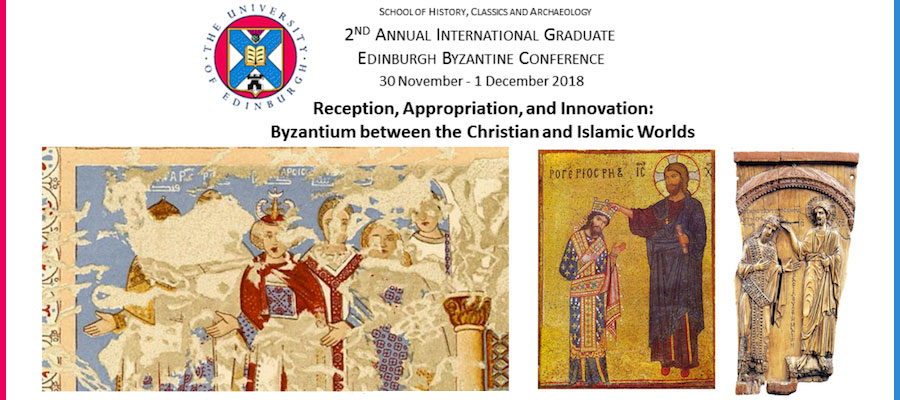Reception, Appropriation, and Innovation: Byzantium between the Christian and Islamic Worlds, 2nd Annual International Graduate Edinburgh Byzantine Conference, November 30–December 1, 2018
Reception and appropriation (whether reuse, imitation, or variation) have long been recognised as necessary tools for the interpretation of Byzantine literature, art, architecture and archaeology, while research on innovations is still at a relatively early stage.
The key theme of this conference is dialogue – dialogue between Byzantium and its neighbouring cultures. The conference will be hosted by the Late Antique and Byzantine Studies Research Group of the University of Edinburgh from 30 November-1 December 2018, and will explore all three of the fundamental modes of dialogue and discourse (reception, appropriation and innovation) between Byzantium and its neighbours during any time period from the 5th-15th c. Confirmed invited speakers include Prof. Claudia Rapp (Vienna), Dr. Andrew Marsham (Cambridge), and Fr. Justin Sinaites (Librarian of St. Catherine’s, Mt. Sinai), in addition to confirmed internal speakers, both Byzantinists and Islamicists.
We strongly encourage papers highlighting exchange in both directions: Byzantium receiving from other cultures and/or others receiving from Byzantium. Possible topics include, but are certainly not limited to:
- Before the Christian and Islamic Worlds: reception and appropriation of Classical Greek or Latin heritage within Byzantium – perspectives from culture, text, legislation, gender, symbolism, art, etc.
- Contemporary exchange and attempts at imitation (concepts of culture, text, gender, legislation, symbolism etc.) between Byzantium, the Islamic World, Latin Europe and imperial courts
- Artistic similarities (visual art, sculpture, painting, etc.), whether as a result of promotion or prohibition, as an expression or mode of cultural exchange or identification across East and West
- Production, circulation and demand for luxury goods or household artefacts as evidence for dialogue and/or interaction between Byzantium and its neighbours
- Urban layout and rural landscape: military, civil and religious architecture in cities and countryside – common links and peculiarities between Byzantium and neighbouring powers
- Interdisciplinary approaches to interpretations of Byzantine (inter)action throughout the Mediterranean, taking into account multiple types of primary source evidence
